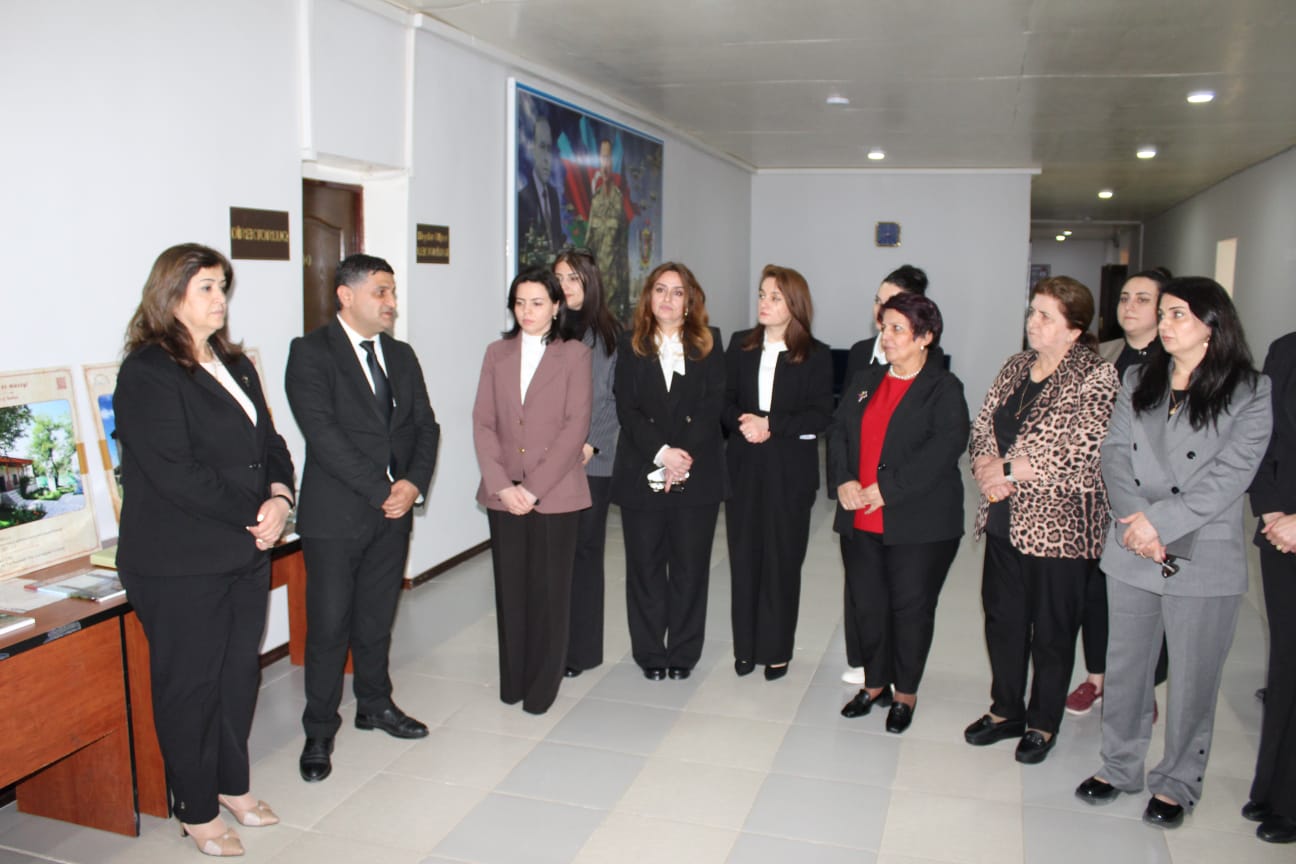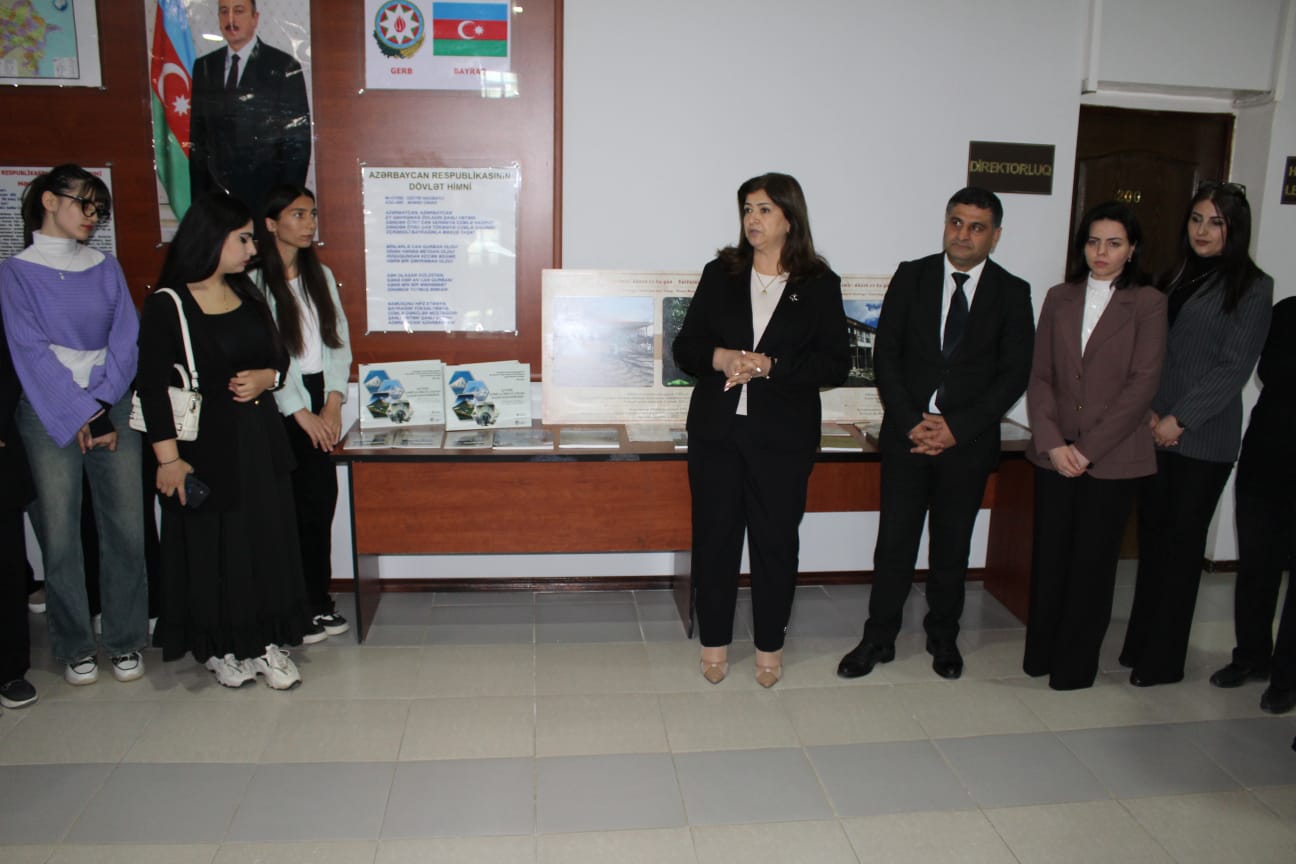

An exhibition was organized at the Shamakhi branch of the Azerbaijan State Pedagogical University (ASPU) within the framework of the “Year of the Constitution and Sovereignty” and the project “Our Cultural Heritage: Yesterday and Today”, initiated by the Quba Genocide Memorial Complex.
At the opening of the exhibition, the director of the Shamakhi branch, Associate Professor Tünzalə Yusifova, emphasized that the exhibition was held in accordance with the provisions of the memorandum signed between the branch and the Quba Genocide Memorial Complex. She noted that this exhibition plays an important role in educating young people about the restoration and protection of our cultural heritage.It was also highlighted that the Azerbaijani state and people continue their just struggle on their historical and ancestral lands based on international law. During the 44-day Patriotic War, under the leadership of the President of the Republic of Azerbaijan and Supreme Commander-in-Chief of the Armed Forces, Ilham Aliyev, the victorious Azerbaijani army liberated the country’s lands from occupation after 30 years. This victory was also an act of retribution for the ethnic cleansing, genocide, and acts of vandalism committed by Armenia against the Azerbaijani people.
Armenia bears international legal responsibility for the acts of vandalism committed against cultural monuments in the occupied territories. Research is currently being conducted regarding the restoration of these monuments and the preservation of historical heritage. Restoration and reconstruction efforts in Karabakh and other liberated territories are being carried out in a systematic and well-planned manner.
Later, Dr. Subhan Talibli, Associate Professor of the Department of Social and Special Subjects at the branch and an expert of the Genocide Memorial Complex in Quba, spoke in detail about the exhibition. He touched upon current issues related to the preservation and restoration of cultural heritage. He stated that the restoration of monuments destroyed during the occupation in Karabakh is not just a construction process, but also a restoration of the identity of our people and the recovery of lost values.
“Every monument is a piece of history, every stone is a memory,” he said. “The restoration of these monuments teaches us not to forget our past and to build a stronger and more resilient future.” In his speech, he also provided detailed information on the Karabakh Khanate, the socio-political, socio-economic, and cultural-spiritual situation in Karabakh, Armenian terrorism against Azerbaijan’s historical and cultural-spiritual monuments, Armenian vandalism in Yerevan, the destruction of Turkic-Muslim and Albanian monuments in Karabakh during the occupation, and the historical background and restoration processes of monuments destroyed as a result of Armenian vandalism.
The exhibition, which attracted great interest from the branch’s staff and students, will remain open for several days






